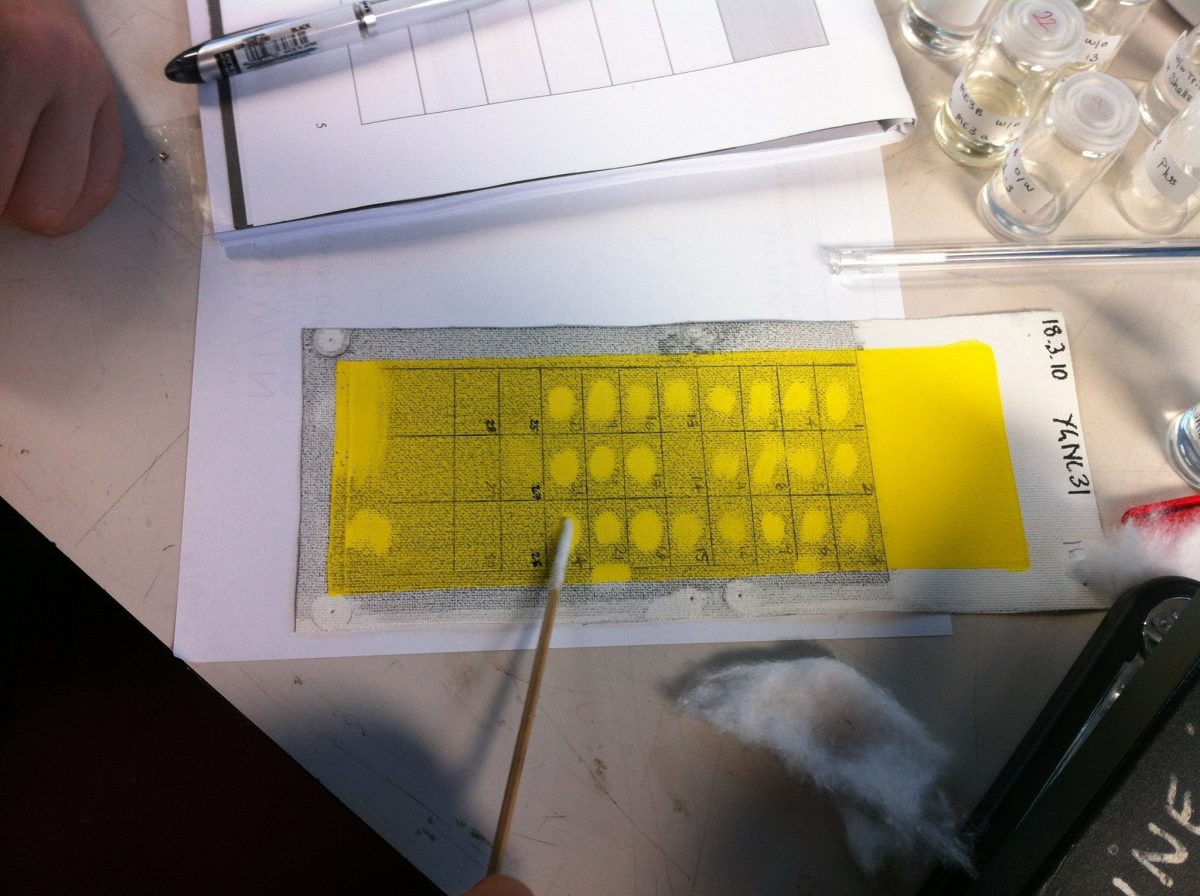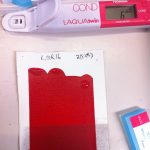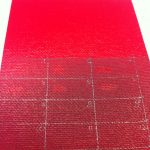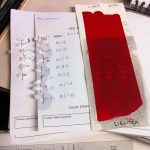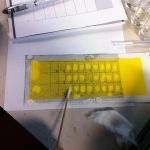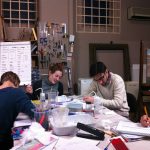Course Leader: Bronwyn Ormsby, Principal Conservation Scientist at Tate, United Kingdom.
This two day workshop on the Cleaning of Acrylic Paintings took place in December 2015 at the Hamilton Kerr Institute (Cambridge, UK). The workshop was aimed at conservators with an interest in acrylics but not necessarily experienced with this modern material. The morning sessions were dedicated to the history of modern paints and theory of cleaning while the afternoons were more hands-on.
During these two afternoons, we tested and rated various products used for the cleaning of modern and contemporary artworks. The much-anticipated micro-emulsions, developed in collaboration with the Dow Chemical Company, were made in situ by Ormsby. They offer new possibilities for the cleaning of modern paint layers; although, when we tested them on naturally aged and artificially soiled acrylic samples, there was a natural aura of uncertainty. Depending on the solutions, some did not remove enough of the soiling, and other options worked a little too well, where some pigment was removed with the grime layer. Ormsby suggested it was possible some pigments were not locked into the film upon drying and that as a result, there could be some loose pigment on the paint surface, hence the sensitivity to the slightest mechanical action, which underlines the importance of the application of cleaning products onto these paint layers. Also, some colours were more sensitive than others, like the synthetic organic red paint tested (PV19); the response was also quite dependent on the brand of the acrylic paint used. A lot of information to assimilate for us conservators of Old Masters!
This workshop was a real eye-opener, in the sense that despite knowing these modern paints are difficult and breed new conservation issues, having the chance to actually test many cleaning products on “safe” samples taught us a lot without the risks and consequences of experimenting on real artworks.
A poll was done at the end of the workshop to underline which solutions worked best, and which did not. It was interesting to see that once again, the results were not black and white. Two conservators with the same samples had different results, probably due to handling and application technique. Nevertheless, Ormsby recorded the results in order to understand which systems and micro emulsions worked best overall, to keep improving them for studio use. Ormsby was very down to earth and calm as well as encouraging. No, we do not understand all the problems yet and certainly don’t have all the solutions, but we are progressing towards a better understanding of the risks associated with modern paints, and the research feeding into the development of improved cleaning materials and studio practice.
Camille Polkownik – 1st year Post Graduate Intern at the Hamilton Kerr Institute
Ms Camille Polkownik graduated with a Master Degree in the Conservation and Restoration of Paintings in 2014, from the École nationale supérieure des arts visuels de La Cambre in Brussels . She also has a Bachelor degree in the Conservation and Restoration of Painted Works (2011) from the Superior School of Fine Arts, in Avignon, France. She has interned at the Royal Institute for Culture Heritage (KIK-IRPA, Beligum), the Museum of Fine Arts of Nice (France), in private studios and at the Art Gallery of New South Wales (Sydney, Australia).
To contact Camille Polkownik : camille.polkownik@gmail.com

